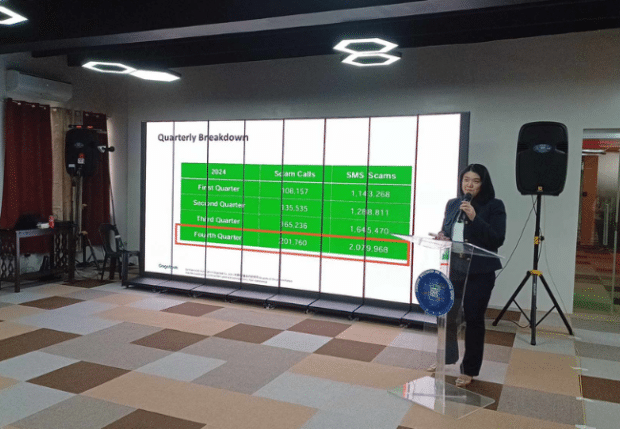Whoscall app: The PH had 6 million text scam messages in 2024
In 2024, the global anti-scam app Whoscall recorded 6,157,517 text scam messages in the Philippines.
Its developer Gogolook reported that the fourth quarter of 2024 registered the highest number of SMS scams among all four quarters.
READ: How to spot and avoid YouTube comment scams
Gogolook Philippines Country Head Mel Migriño elaborated on these findings in the 2024 Whoscall Philippine Scam Report at the CICC in Taguig.
Text scam messages rise in the Philippines

“If you look at it, there is around 20,000 to 30,000 increase per quarter,” Gogolook Philippines Country Head Mel Migriño said, explaining the quarterly trends.
Then, she discussed the sharpest spike of text scam messages during the fourth quarter:
“It’s more of a cultural thing. Filipinos would have a greater propensity to spend. This was the time when Filipinos would get their bonuses, commissions, and remittances.”
The Whoscall data also revealed the following regarding SMS scams in the Philippines last year:
- Loan-related scams comprised 23% of text scams, and they were also the most common among the other types.
- Whoscall recorded 16,553 suspicious URLs, and 26% had invitations to register for online services, insurance, and similar financial schemes.
- 73% of Filipinos are confident in their ability to recognize scams.
- 67% of Filipinos encounter scams at least once monthly.
- 49% of Filipinos faced more scam encounters in the last 12 months
- Most Filipinos know scammers can use AI against them.
- Most scams originate from social media and SMS messages.
- Scammers exploit Facebook and Gmail the most.
- Shopping websites are the most common scam type in the Philippines.
- 76% of text scams in the Philippines are completed within 24 hours of first contact.
- Digital wallets or e-wallets are the dominant scam payment method.
- Filipinos fall for attractive scams by acting hastily.
- Only 3% of victims were able to fully recover their losses.
In light of these trends, CICC Executive Director Alexander Ramos reminds the public to report whenever they fall victim to text scams.
Reporting may help them recover their funds and prevent these schemes from gaining more victims.
Call the Inter-Agency Response Center (IARC) hotline 1326 for these concerns. It’s toll-free and operates 24/7, from Mondays to Sundays, including holidays.